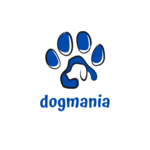Pros and Cons of Feeding Your Pet Grain-Free Dog Food
As pet owners, ensuring our dogs receive the best possible nutrition is a top priority. Recently, grain-free dog food has surged in popularity, with proponents touting its health benefits and detractors cautioning against potential risks. In this comprehensive guide, we will explore the pros and cons of feeding your pet grain-free dog food, helping you make an informed decision about your dog's diet.
What is Grain-Free Dog Food?
Grain-free dog food is formulated without grains like wheat, corn, barley, and rice. Instead, these foods often use alternative carbohydrate sources such as potatoes, peas, lentils, and chickpeas. The idea behind grain-free diets is to provide a more ancestral diet that mimics what dogs’ wild ancestors might have eaten.
Pros of Grain-Free Dog Food
1. Improved Digestion
Many dogs have sensitivities or allergies to grains, which can cause digestive issues such as bloating, gas, and diarrhea. Grain-free dog food can alleviate these problems, leading to better digestive health.
2. Better Skin and Coat Health
Grain allergies or sensitivities can manifest as skin irritations or a dull coat. Grain-free diets, which often include ingredients rich in omega-3 and omega-6 fatty acids, can improve skin health and result in a shinier, healthier coat.
3. Higher Protein Content
Grain-free dog foods typically have a higher protein content compared to grain-inclusive diets. High-quality protein sources like chicken, beef, or fish are often the primary ingredients, supporting muscle development and overall health.
4. Weight Management
Grain-free dog foods can aid in weight control. Grains are high in carbohydrates, which can contribute to weight gain. By eliminating grains, these foods may help dogs maintain a healthier weight, especially when combined with regular exercise.
5. Increased Energy Levels
Dogs on grain-free diets often exhibit higher energy levels. The high-quality proteins and fats found in grain-free foods provide sustained energy, making your dog more active and playful.
6. Allergy Management
For dogs with specific grain allergies, a grain-free diet can prevent allergic reactions, including itching, ear infections, and gastrointestinal distress.
Cons of Grain-Free Dog Food
1. Nutritional Imbalance
Not all grain-free dog foods are created equal. Some may lack essential nutrients or include non-grain fillers that do not offer significant nutritional benefits. It's crucial to choose a high-quality brand to ensure a balanced diet.
2. Cost
Grain-free dog foods are generally more expensive than their grain-inclusive counterparts due to the higher quality ingredients used. This increased cost can be a significant factor for pet owners, especially those with large dogs or multiple pets.
3. Heart Health Concerns
The FDA has investigated potential links between grain-free diets and canine dilated cardiomyopathy (DCM), a condition affecting the heart muscle. While the evidence is not yet conclusive, it's a concern that pet owners should discuss with their veterinarian.
4. Not Necessary for All Dogs
While some dogs benefit from grain-free diets, others do just as well on high-quality grain-inclusive foods. For many dogs, grains are a valuable source of nutrients and energy.
5. Potential Over-reliance on Legumes
Many grain-free dog foods use legumes like peas, lentils, and chickpeas as primary ingredients. These can sometimes be difficult for dogs to digest and may lead to gastrointestinal issues in some pets.
6. Diet Transition Challenges
Switching your dog to a grain-free diet can be challenging, especially if your dog is used to grain-inclusive food. A gradual transition is necessary to prevent digestive upset.
Is Grain-Free Right for Your Dog?
Determining whether a grain-free diet is right for your dog involves considering several factors, including your dog's specific health needs, age, activity level, and any existing health conditions. Here are some steps to help you decide:
1. Consult Your Veterinarian
Before making any significant changes to your dog's diet, it's essential to seek advice from a veterinarian. They can provide personalized recommendations based on your dog's health, age, and breed.
2. Monitor Your Dog’s Health
If you decide to switch to a grain-free diet, keep a close eye on your dog's health and behavior. Improvements in digestion, skin condition, energy levels, and weight management can indicate that the new diet is beneficial. Conversely, if you notice any adverse effects, consult your vet immediately.
3. Trial and Error
Introduce new foods gradually to monitor how your dog reacts. If you notice any adverse reactions, consult your vet and consider trying a different brand or formulation.
4. Read Labels and Do Research
Research different brands and read reviews from other pet owners. Look for foods where the primary ingredients are high-quality proteins and avoid products with excessive fillers, artificial preservatives, or by-products.
conclusion
Feeding your pet grain-free dog food comes with both benefits and potential drawbacks. While many dogs thrive on grain-free diets, experiencing improved digestion, better skin and coat health, and increased energy levels, it's important to be aware of the potential risks, including nutritional imbalances and heart health concerns.
Ultimately, the decision to feed your dog a grain-free diet should be based on your dog's individual needs and in consultation with your veterinarian. By doing thorough research and monitoring your pet’s health, you can make an informed decision that supports a long, healthy, and happy life for your furry friend.



leave me your thoughts here